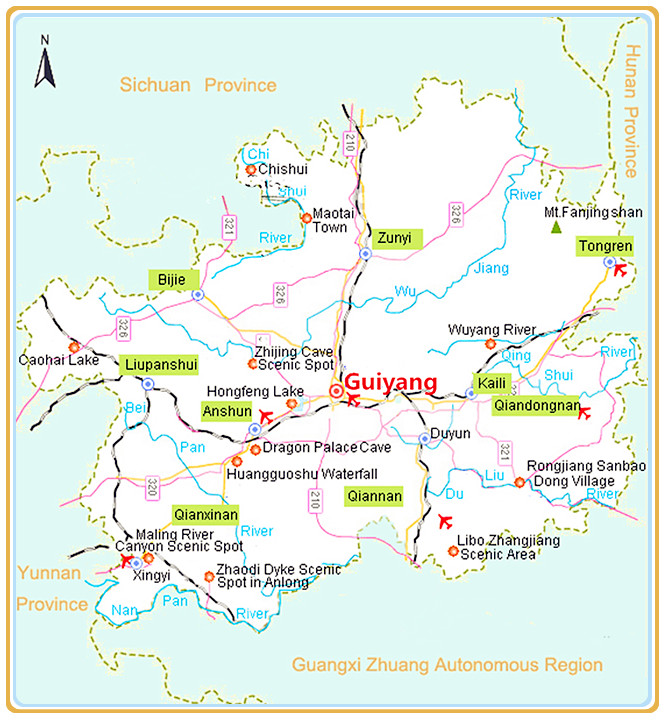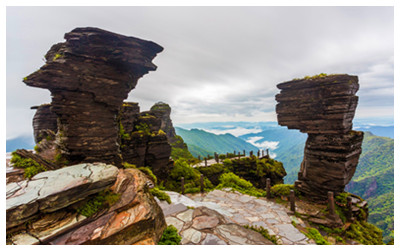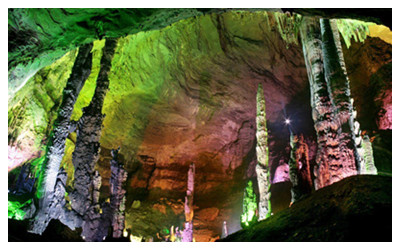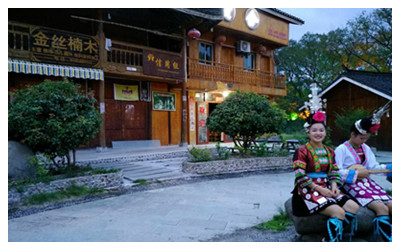
Tongren Travel Guide
 Tongren City, (铜仁市 ),is a prefecture-level city which is known as the gateway to eastern Guizhou Province.Tongren is situated in the junction of Guizhou Province and Hunan Province.Located within a tobacco planting and crop agricultural area, Tongren was known as Tongren Prefecture (铜仁地区) until November 2011, when it was converted into a prefecture-level city.Tongren City is the political, economic and cultural center of the its region and enjoys a level of a capital City in its region.
Tongren City, (铜仁市 ),is a prefecture-level city which is known as the gateway to eastern Guizhou Province.Tongren is situated in the junction of Guizhou Province and Hunan Province.Located within a tobacco planting and crop agricultural area, Tongren was known as Tongren Prefecture (铜仁地区) until November 2011, when it was converted into a prefecture-level city.Tongren City is the political, economic and cultural center of the its region and enjoys a level of a capital City in its region.
Facts of Tongren City
Chinese Name: 铜仁市(tóng rēn shì)
Area: 18,023 square kilometers (6,959 square miles)
Population: about 3,800,000
Nationalities: Han, Tujia, Miao, Dong, etc.
Area Code: 0856
Zip Code: 554300
History of Tongren
There are no historical records about this area before the Warring States Period (476BC-221BC). Legend has it that during the Yuan Dynasty (1271-1368) a man found three bronze figures underwater, hence the name Tongren (bronze figure). The region's governance covers 1 city (Tongren City), 4 counties (Jiangkou, Shiqian, Sinan, Dejiang), 4 autonomous counties (Yuping Dong Autonomous County, Yinjiang Tujia and Miao Autonomous County, Yanhe Tujia Autonomous County, Songtao Miao Autonomous County) and 1 special district (Wanshan Special District).
What to see in Tongren?
Tongren has a complex topology, including features of the outstanding Karst topology. On the whole, the terrain of the central area is lower than that of the surrounding areas, even though most of the land of the this region is mountainous.
 |
 |
 |
| Fanjingshan Mountain Scenic Area | Nine-Dragon Cave | Zhaisha Dong Village |
Tongren has been the home to a variety of ethnic groups including the Miao, Dong and Tujia and their different social customs attract the visitors most. In fact, ethnic minorities make up more than fifty percent of Tongren's population. The customs, folk songs, and performances of the Dong, Tujia, and Miao ethnic minorities are not to be missed when visiting there. One of the cultural heritages in this region is the Nuo Opera which is renowned as the live fossil of Chinese Opera. Special performances, for example the 'Climbing the blade', can be seen at the Nuo Opera. The performances are both breathtaking and wonderful. The 'Nuo Mask' and other wares which are used in Nuo Opera now are on display at the China Nuo Opera and Nuo Mask Museum.
How to get to Tongren?
Tongren transportation system is well developed in this region. Tongren Daxing Airport services flights to Guiyang, Chongqing, Guangzhou, Shenzhen and is the transportation hub of Hunan, Chongqing, Hubei and Guizhou. Several highways converge in this region and provide convenient transportation for tourists.
When to visit Tongren?
Tongren is located in the inland of Guizhou Province and has a typical subtropical humid monsoon climate. It is therefore hot in summer and warm in winter, and is rich in rainfall. The annual average temperature is about 13![]() C (55.4
C (55.4![]() F) - 17
F) - 17![]() C (62.6
C (62.6![]() F). Because of its low altitude, Tongren usually has the highest temperature of anywhere in Guizhou during the summer, which is usually about 42.5
F). Because of its low altitude, Tongren usually has the highest temperature of anywhere in Guizhou during the summer, which is usually about 42.5![]() C (108.5
C (108.5![]() F). Although the summer is hot, the forests of Fanjing Mountain are cooler, meaning tourists can enjoy their stay through all seasons in this region.
F). Although the summer is hot, the forests of Fanjing Mountain are cooler, meaning tourists can enjoy their stay through all seasons in this region.
Tongren Travel Tips
Useful Numbers:
Tourist Complaint (Tongren Tourism Bureau): 0857- 8236760
Consumer Complaint: 12315 0856 - 5283354
Weather Forecast: 121
The Bank of China provides the easiest foreign exchange service for tourists. Tongren has the following Bank of China.
Shizhong Small Local Branch
Address: Minzhu Road,Tongren City
Qiaotou Small Local Branch
Address: Gongqing Road,Tongren City
Tongren Festivals:
The Dong Minority has the largest population among the 24 minority groups in Tongren Region. They live on rice, corn, wheat, sweet potato and jowar and like beef, pork, shrimp and pickled meat or vegetables. They drink sweet wine and Oil Camellia which are considered appropriate for guests. Dong cloth, flax and silk are the preferred materials for clothing among this people. Their special festivals are as follows:
She Day is celebrated by the Dong Minority on the fiftieth day after the beginning of spring. On this day, members of the Dong eat the She Meal which is made of sticky rice, shallots and preserved ham.
The Double 3rd Festival (also called Gan'ao or Shechang) is celebrated on March 3rd of the lunar calendar. People dress up in festive clothing and sing traditional songs.
The Double 6th Festival (also called the Changxin Festival) is the day on which fresh rice, melon and fruit, fish and meat are offered up in homage to the forefathers of the Dong people.
The Tujia Minority holds the second largest population among the groups in Tongren and is one of the oldest groups in the region. They live on rice, corn and food made from sticky rice such as glutinous rice cakes, sweet rice wine and stir-fried rice. Their special festivals are the same as the Dong Minority.



 Ask Questions ?
Ask Questions ?